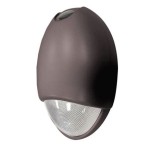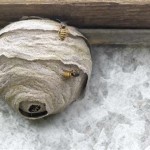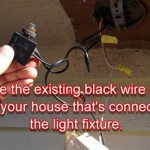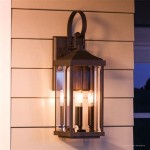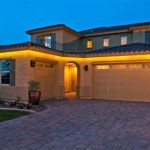```html
Outdoor Lighting Catalogues: A Comprehensive Guide
Outdoor lighting catalogues serve as vital resources for homeowners, landscape architects, contractors, and interior designers planning and executing exterior lighting projects. These catalogues, whether in print or digital form, offer a comprehensive overview of available lighting products, their specifications, and potential applications. They are essential tools for navigating the vast array of options and making informed decisions that enhance the aesthetic appeal, safety, and functionality of outdoor spaces.
The purpose of an outdoor lighting catalogue extends beyond simply showcasing products. It provides detailed information on lighting technologies, energy efficiency, installation techniques, and maintenance requirements. Consequently, understanding how to effectively utilize these catalogues is crucial for successful outdoor lighting design and implementation.
Understanding the Structure and Content of Outdoor Lighting Catalogues
Most outdoor lighting catalogues share a common organizational structure designed to facilitate efficient product searching and comparison. Products are typically categorized by type (e.g., path lights, spotlights, floodlights, wall sconces, post lights), style (e.g., contemporary, traditional, rustic), and application (e.g., landscape lighting, security lighting, architectural lighting). This categorization allows users to quickly narrow down their search based on specific needs and preferences.
Within each category, individual products are presented with detailed specifications, including:
- Light Source: Information on the type of bulb or LED used, including wattage, lumen output, color temperature (Kelvin), and color rendering index (CRI). Understanding these parameters is crucial for determining the brightness, color accuracy, and overall quality of light produced.
- Fixture Material and Finish: Descriptions of the materials used in the fixture's construction (e.g., aluminum, brass, copper, stainless steel) and the available finishes (e.g., black, bronze, silver, weathered). These factors determine the fixture's durability, resistance to weathering, and aesthetic appeal.
- Dimensions: Precise measurements of the fixture's height, width, and depth, which are critical for ensuring proper fit and placement within the intended outdoor space.
- Voltage and Wiring Requirements: Information on the voltage required to operate the fixture (e.g., 12V, 120V) and the necessary wiring connections. Adhering to these requirements is essential for safe and reliable operation.
- Ingress Protection (IP) Rating: A two-digit code indicating the fixture's level of protection against dust and water ingress. A higher IP rating signifies greater protection and suitability for outdoor use.
- Warranty Information: Details on the manufacturer's warranty, covering defects in materials and workmanship. A longer warranty period generally indicates a higher level of product quality and manufacturer confidence.
- Certifications and Compliance: Listing of relevant certifications and compliance standards, such as UL (Underwriters Laboratories) or ETL (Electrical Testing Laboratories) listings, which ensure that the fixture meets safety and performance requirements.
In addition to product specifications, outdoor lighting catalogues often include illustrative photographs, diagrams, and technical drawings. These visual aids provide a clear understanding of the fixture's appearance, dimensions, and installation requirements. Furthermore, some catalogues offer case studies showcasing how specific lighting products have been used in real-world projects, providing inspiration and practical guidance.
Key Considerations When Selecting Lighting Fixtures from Catalogues
Choosing the right outdoor lighting fixtures requires careful consideration of several factors. It is not simply a matter of selecting the most aesthetically pleasing option; performance, energy efficiency, and durability are equally important.
Aesthetic Considerations: The style and finish of the lighting fixtures should complement the architectural style of the building and the overall design of the outdoor space. Consider the existing color palette, materials, and textures to ensure that the lighting fixtures blend seamlessly with the surroundings. For example, a contemporary home might benefit from sleek, minimalist fixtures, while a traditional home might be better suited to more ornate, decorative designs.
Functional Requirements: Determine the primary purpose of the outdoor lighting. Is it intended to provide general illumination, highlight architectural features, enhance safety and security, or create a specific ambiance? Different lighting applications require different types of fixtures and light levels. For example, path lights are ideal for illuminating walkways and driveways, while spotlights are better suited for highlighting trees or statues. Security lighting requires bright, motion-activated fixtures that can deter intruders.
Energy Efficiency: Opt for energy-efficient lighting technologies, such as LED (light-emitting diode) fixtures. LEDs consume significantly less energy than traditional incandescent or halogen bulbs, resulting in lower electricity bills and a reduced carbon footprint. Look for fixtures with high lumen output per watt (lm/W), indicating greater energy efficiency. Furthermore, consider using fixtures with built-in timers or motion sensors to further reduce energy consumption.
Durability and Weather Resistance: Outdoor lighting fixtures are exposed to harsh environmental conditions, including rain, snow, sun, and extreme temperatures. Therefore, it is essential to select fixtures that are constructed from durable, weather-resistant materials, such as aluminum, brass, or stainless steel. Ensure that the fixtures have a suitable IP rating to protect against dust and water ingress. Choose fixtures with UV-resistant finishes to prevent fading or discoloration over time.
Light Distribution and Glare Control: Consider the light distribution pattern of the fixtures to ensure that the light is directed where it is needed without causing excessive glare. Glare can be distracting and uncomfortable, and it can also reduce visibility. Look for fixtures with glare shields or lenses that diffuse the light and minimize glare. Consider the beam angle of spotlights and floodlights to achieve the desired level of illumination and avoid creating harsh shadows.
Utilizing Outdoor Lighting Catalogues Effectively: A Step-by-Step Guide
To maximize the value of outdoor lighting catalogues, follow a systematic approach that considers your specific needs and constraints.
Define Your Lighting Goals: Before browsing any catalogues, clearly define your lighting goals. What areas do you want to illuminate? What mood or atmosphere do you want to create? What are your budget constraints? Having a clear understanding of these factors will help you narrow down your search and focus on the most relevant products.
Research Different Lighting Technologies: Familiarize yourself with the different types of lighting technologies available, such as LED, halogen, and incandescent. Understand the advantages and disadvantages of each technology in terms of energy efficiency, lifespan, color rendering, and cost. LED technology is generally the preferred choice for outdoor lighting due to its energy efficiency, long lifespan, and versatility.
Browse Catalogues and Compare Products: Once you have a good understanding of your lighting goals and available technologies, begin browsing outdoor lighting catalogues. Compare products based on their specifications, features, and price. Pay close attention to the light source, fixture material, dimensions, IP rating, and warranty information. Read product reviews and testimonials to get a better understanding of the products' performance and reliability.
Consider the Installation Requirements: Before making a purchase, carefully consider the installation requirements of the lighting fixtures. Are they easy to install, or do they require professional installation? Do you have the necessary tools and expertise to install the fixtures yourself, or will you need to hire a qualified electrician? Ensure that the fixtures are compatible with your existing electrical system and that you comply with all applicable building codes and regulations.
Create a Lighting Plan: Develop a detailed lighting plan that shows the placement of each fixture and the direction of the light. Consider the impact of shadows and glare, and adjust the placement of the fixtures accordingly. Use a lighting design software or consult with a lighting professional to create a comprehensive lighting plan that meets your specific needs and preferences.
Test and Adjust: After installing the lighting fixtures, test them thoroughly to ensure that they are functioning properly and that they provide the desired level of illumination. Make any necessary adjustments to the placement or aiming of the fixtures to optimize the lighting effect. Observe the lighting at different times of day and in different weather conditions to ensure that it performs as expected.
In conclusion, outdoor lighting catalogues are indispensable tools for anyone planning an outdoor lighting project. By understanding the structure and content of these catalogues and following a systematic approach to product selection, you can create an outdoor lighting system that is both beautiful and functional.
```
Outdoor Garden Lighting Catalogues Lumena Lights

Outdoor Lighting Iridium Gen3 Philips Catalogs Documentation Brochures

2024 Tech Lighting Outdoor Catalog Catalogs Documentation Brochures

Outdoor Catalogue 2024 Ligman

Eci Lighting Fumagalli

Catalogues

Outdoor Catalogue Thorn Europhane Catalogs Documentation Brochures

Lx Rohs Led Outdoor Lights Input Voltage 220volt

Outdoor Lighting Esteta Interiori

Flos Outdoor
Related Posts

